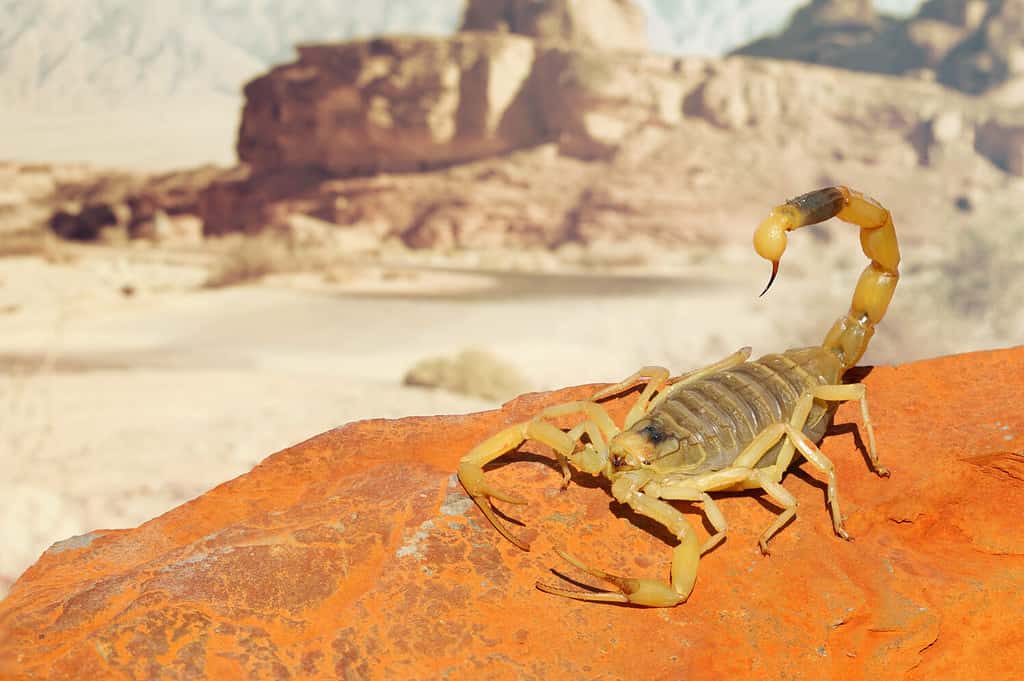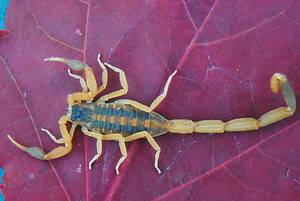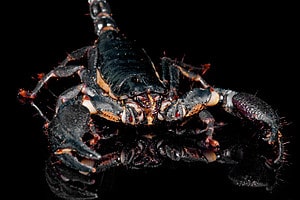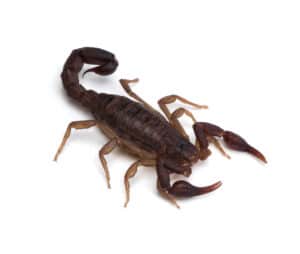In the Majami’al-Hadb Reserve, a protected area in Saudi Arabia, the views are tremendous. The dark-colored volcanic mountains, vast landscape of sand, and fading granite domes look quite ominous in the night. Since the area is under protection, it is a sanctuary for all living creatures living there. Some of the creatures haven’t even been discovered yet. This glowing new scorpion species discovered days ago may only live in the protected area, which just goes to show how important areas like that truly can be.
Finding the New Scorpion Species: Leiurus hadb

Not an actual photo of the species, Leiurus hadb but is the close relative, Leiurus quinquestriatus.
©Protasov AN/Shutterstock.com
Scientists set out at night, armed with ultraviolet lights, to scan the terrain. This commonly used technique helps researchers find scorpions in the desert much easier than stumbling upon one by accident. Once the light touched the sand, 11 scorpions appeared, and one was the new species, Leiurus hadb.
The animals glow under ultraviolet light “due to certain chemicals in their exoskeleton” reacting to the light, he said. “The color of the glow can vary depending on the species of scorpion, but it is usually a blue-green color,” co-author Ahmed Badry told McClatchy News.
Majami’al-Hadb Scorpion (Leiurus hadb) Specifications

The Saudi Arabian desert is a diverse place. In the Majami’al-Hadb Reserve, vegetation is everywhere, providing habitats for many species.
©iStock.com/Matthew Starling
The Majami’al-Hadb Scorpion (Leiurus hadb) is a fairly typical Saudi Arabian scorpion. It is a medium-large scorpion, measuring 2.5 – 4.5 inches long. It is venomous like its cousin scorpions, though at this time, it is unclear how harmful it is to humans. The scorpion is a yellowish-orange color, with its tail and back being a brownish-black color. It also has some black spots. The stinging bulb at the tip of the half-heart-shaped tail is also yellow. As with all scorpions, it has eight legs and two pinchers. Much is still unknown about this new scorpion species.
Thank you for reading! Have some feedback for us? Contact the AZ Animals editorial team.








